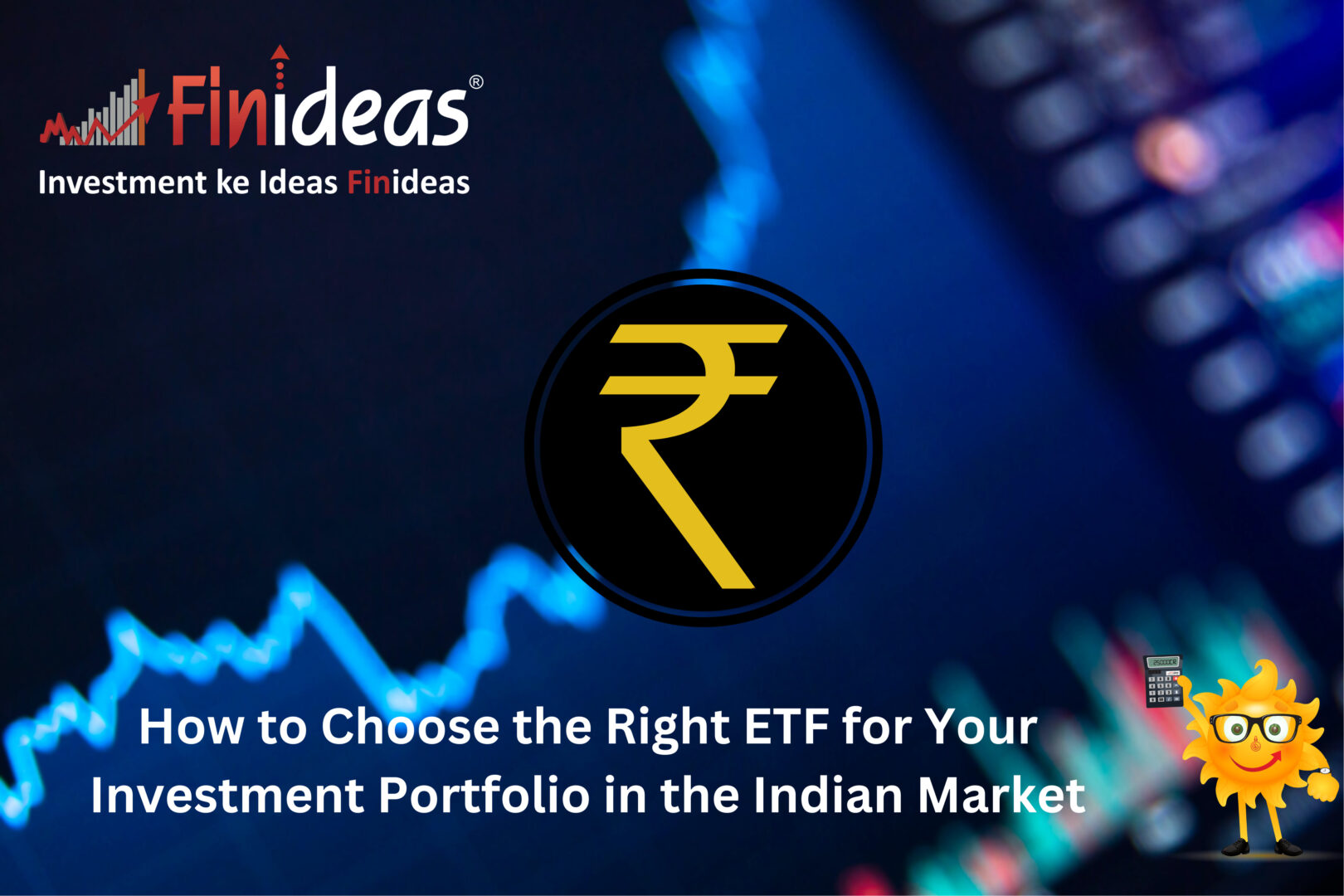Choose Right ETFfor your portfolio
Introduction:
Exchange-Traded Funds (ETFs) have gained immense popularity among investors in the Indian market due to their ease of access, diversification benefits, and cost-efficiency. With a wide range of ETF options available, choosing the right one for your investment portfolio can seem overwhelming. In this blog post, we will discuss key factors to consider when selecting an ETF to help you make an informed decision that aligns with your investment goals and risk tolerance in the Indian market.
- Define Your Investment Objectives:
Before selecting an ETF, it is crucial to define your investment objectives clearly. Are you seeking long-term growth, income generation, or capital preservation? Understanding your goals will help you narrow down your options and choose an ETF that aligns with your investment horizon and risk appetite.
- Assess the Underlying Index:
ETFs are designed to track specific indices, such as the Nifty 50 or Sensex, in the Indian market. It is essential to assess the underlying index of an ETF to ensure it matches your investment objectives. Evaluate the constituents of the index, sector allocations, and the methodology used to construct and rebalance the index. A well-constructed and representative index is more likely to provide consistent performance.
- Analyse the Expense Ratio:
Expense ratio is the annual fee charged by ETF providers for managing the fund. Since ETFs aim to replicate the performance of an index, lower expense ratios are generally more favourable as they can contribute to higher returns. Compare expense ratios across similar ETFs and select one with a competitive cost structure to optimize your investment returns.
- Liquidity and Trading Volume:
Liquidity and trading volume are crucial considerations when choosing an ETF. Higher trading volumes indicate greater liquidity, which ensures that you can buy or sell shares without significant price deviations. Low liquidity can lead to wider bid-ask spreads and potentially impact your transaction costs. Consider popular and widely traded ETFs with sufficient trading volume to ensure ease of buying and selling in the Indian market.
- Track Record and Performance:
Evaluate the historical performance of the ETF before investing. While past performance does not guarantee future results, it can provide insights into how the ETF has performed in various market conditions. Compare the ETF’s performance against its benchmark index and peer group to gauge its consistency and ability to deliver returns. Additionally, consider the ETF’s performance during market downturns to assess its resilience and risk management capabilities.
- Diversification and Sector Exposure:
ETFs offer diversification by providing exposure to multiple stocks or sectors within a single investment. Assess the ETF’s holdings to ensure they align with your desired level of diversification. Evaluate the sector allocations and underlying securities to avoid excessive concentration in a specific industry or stock. A well-diversified ETF can help mitigate risks and provide exposure to a broad range of sectors in the Indian market.
- Consider the Dividend Policy:
If you seek income generation from your investments, consider an ETF with a favorable dividend policy. Some ETFs in the Indian market distribute dividends to their investors. Assess the frequency and consistency of dividend payouts, as well as the dividend yield, to understand the income potential of the ETF.
- Fund Size and Asset Under Management (AUM):
While fund size does not directly impact an ETF’s performance, it can provide an indication of its popularity and investor confidence. Larger AUM indicates investor trust and may translate into better liquidity. However, smaller, niche ETFs may offer exposure to specific sectors or themes that align with your investment strategy. Strike a balance between fund size and the investment focus that suits your requirements.
- Understand Tax Implications:
Be mindful of the tax implications associated with ETF investments in the Indian market. Long-term capital gains tax and short-term capital gains tax rates vary, and it’s important to understand the holding period and tax treatment of ETFs. Consult with a tax advisor to determine the potential tax impact on your investments.
Conclusion:
Choosing the right ETF for your investment portfolio in the Indian market requires careful consideration of your investment objectives, the underlying index, expenses, liquidity, performance, diversification, and other relevant factors. Conduct thorough research, compare options, and consult with a financial advisor if needed. By selecting the appropriate ETFs, you can gain exposure to a diversified basket of assets while aligning your investments with your long-term financial goals in the dynamic Indian market.
Happy Investing!

